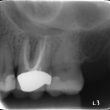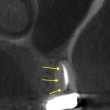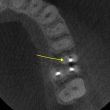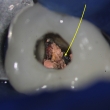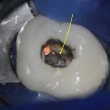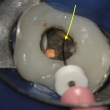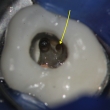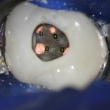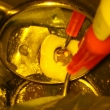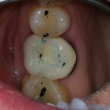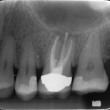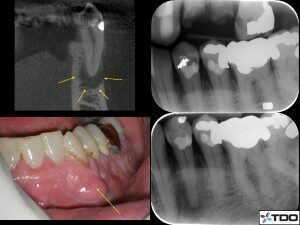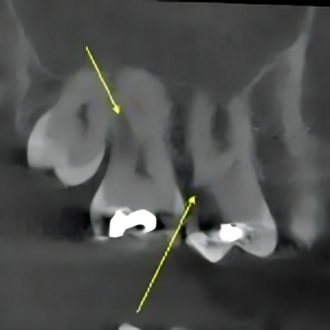Re-treatment of a Missed Canal (MB2)
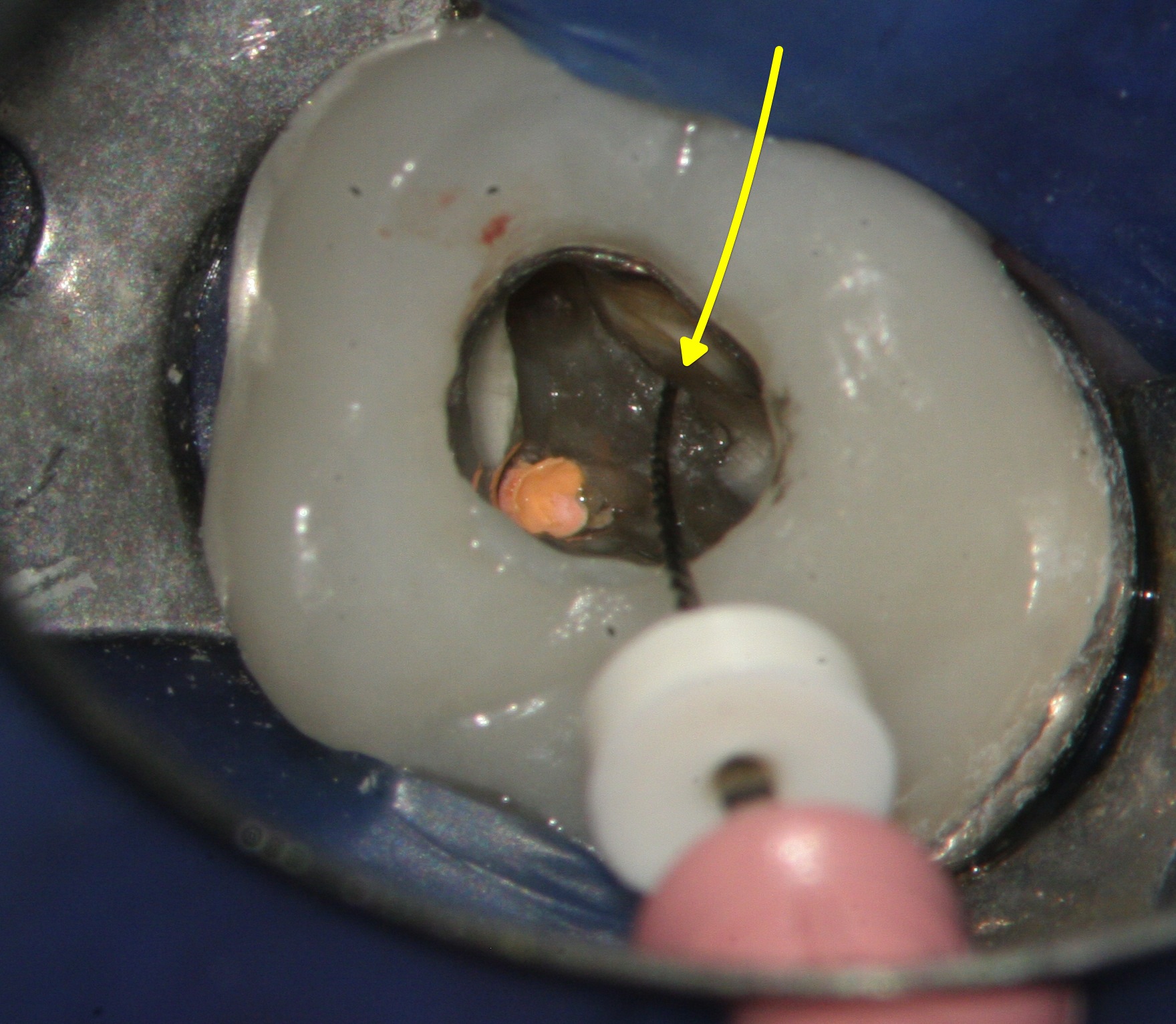
The day after I wrote my article entitled “Does Root Canal Treatment Really Work?” with an emphasis on root canal re-treatment, the very first case I completed was the following.
This was a young female with a root canal done several years earlier by her general dentist. She presented with swelling and deep pocketing around the tooth related to an abscess around the roots. CBCT three dimensional imaging confirmed the presence of bone loss around the root consistent with infection. Also evident was a missed canal – the MB2 canal which is commonly missed in this tooth when root canal treatment is not rendered with proper magnification and lighting such as a dental operating microscope.
The prior root canal was done through the existing crown. The chamber was poorly cleaned at the completion of treatment and the filling was poorly placed with voids and inadequate bonding, which allowed leakage of bacteria into the root canal space. The previously missed MB2 canal was immediately located and was found to join the adjacent canal. The MB2 canal is clinically present close to 75% of the time. This canal as well as the rest of the chamber were badly contaminated, and a black sludge was present, which is likely a combination of bacterial by-products and pulp tissue that was never adequately removed.
All four canals were re-treated in two visits with resolution of symptoms and pocketing by the second visit. The canals were filled, and the chamber thoroughly cleaned. The dentin and porcelain were prepared and a filling was bonded in a manner to create an esthetic appearance.
This tooth has a favorable chance of complete healing after being properly treated. Errors made in the initial treatment were not treating all four canals, not thoroughly removing pulp tissue, and not adequately sealing the access. Had the root canal been treated with proper lighting, magnification, experience, and skill the canal would not have been missed, the access would have been adequately sealed, failure would likely not have occurred, and this patient would not have needed to endure further discomfort and expense of root canal re-treatment. Some would challenge that an implant is better than a root canal because root canals “don’t work”. What we see in this case is that they don’t work when they aren’t done properly. Proper treatment equals proper healing.
The following images were taken throughout treatment and are labeled with explanations.Do root canals work
